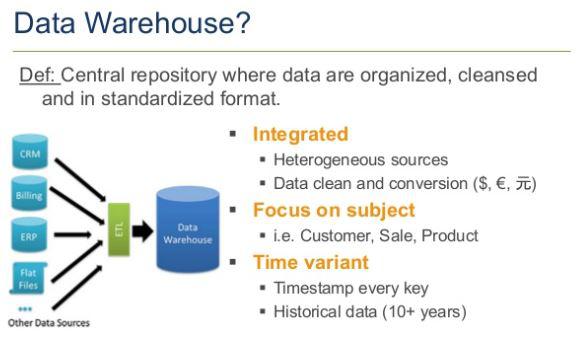Scenario for Developing an Enterprise Data Warehouse
Sample Scenario:
Outline the steps for developing an enterprise data warehouse and migrating application data elements to the central repository, while aligning with Agile Scrum as a methodology.
To successfully develop an Enterprise Data Warehouse where Application Data Elements can be verifiably migrated to a central repository, significant investment in understanding the Agile development methodology, in alignment and comprehension of the key components that comprise the Enterprise Data Warehouse are critical
success factors. "Agile" methodologies represent a generic project implementation methodology that accepts “Iterative” approaches to the Applications and Data Warehouse development framework. The advantage in developing the Enterprise Data Warehouse leveraging the Agile Scrum approach is the architectural design emphasis on the three central aspects for any project: “Features”, “Time” and “Cost”, (Vs traditional approaches that tend to manage “Features” as totally fixed by the time the project is initiated), and how iterative deliverables can be developed, tested, and quality assurance verified (IV&V) through an integrated build management approach that allows for effective management of the key resources required from the technology
organization. As different prioritization is given to the three central aspects of the project, this distinguishing feature enables the achievement of iterative “Deliverable Successes” throughout the life cycle build of the Data Warehouse. The two illustrations below highlight the Data Warehouse and Agile Scrum “Models”:

When defining the migration strategy for developing the Enterprise Data Warehouse, the key business functional areas, notably CRM – BILLING – ERP SYSTEMS, along with other data sources that will comprise the centralized repository should navigate through architectural review processes, driven by Joint Application Development focused activities. While the LOE is determined by the definitive “Data Footprint”, as determined on an organization-by-organization basis, ensuring enterprise architecture and significant business process (data) and applications support (Db and DEV) SME participation in JAD focused design discussions is essential to ensure qualitative success.
Sample Performance Measures:
% Downtime (by application priority)
-
To be determined by industry best practices and domain specific requirements in alignment with customer support standards.
Average Application Response Time
-
To be determined by application specific functional alignment on a business by business basis, and\or generically I.A.W. App Dev. Organizational performance standards.
Average Number of Users/Day
-
To be determined by the specific business function, along with “Peak” vs “Off-Peak” standards for customer service interfacing applications \ systems.
Total Backlog Requests by Type
-
To As reported by the internal Problem Management and\or acceptable ITSM tool, as managed by the Information Technology Support Desk and\or Business End User Support functional area(s).
Schedule a Free Consultation
We help global leaders with their organization's most critical issues and opportunities. Together, we create enduring change and results.

Super Efficient

Deeply Committed


